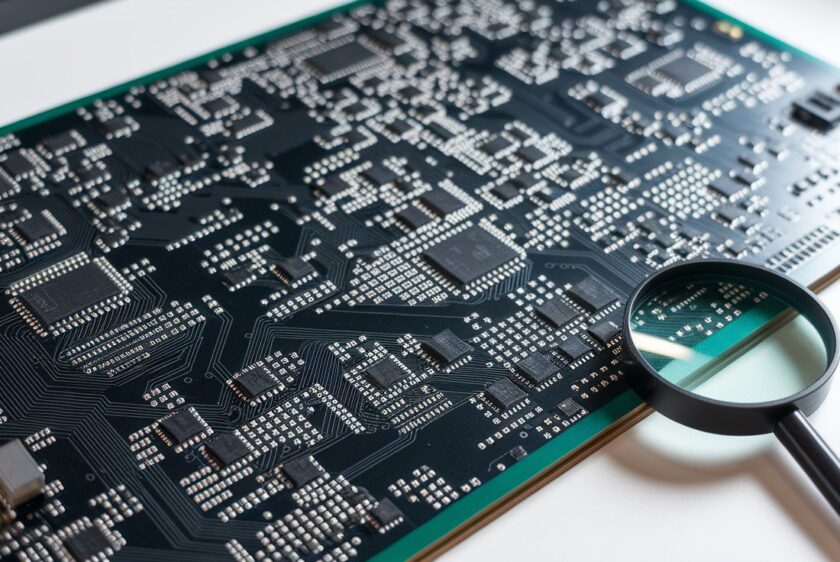
In defense electronics, precision is non-negotiable—and neither is compliance.
If your product is destined for a classified system, tactical platform, or mission-critical communications device, ITAR compliance isn’t just a legal formality. It’s as integral to your build as the PCB layout, connector selection, or enclosure spec. For companies looking to engage in defense-related activities, understanding the intricacies of international traffic and arms regulations is crucial.
And yet, many OEMs—especially those transitioning from commercial sectors—treat ITAR (International Traffic in Arms Regulations) as a procurement issue or a legal team form. A box to check.
In reality, ITAR affects everything: what components you use, who can access your files, where your product is built, and how it's tested, stored, and updated. It affects the export activities and handling of ITAR-classified projects as well.
This article outlines how ITAR compliance reshapes the landscape of complex electronics manufacturing and defense-related technologies—and why your design practices, EMS partnerships, and data infrastructure must evolve accordingly.
What Is ITAR and Why It Matters
ITAR governs the export of defense-related articles, services, and technical data under the United States Munitions List (USML), and is administered by the Directorate of Defense Trade Controls (DDTC). Understanding this is key for handling ITAR-controlled items and defense services.
It applies to:
- RF, radar, or encrypted comms systems
- Navigation or guidance controls
- Secure avionics and aerospace electronics
- Embedded systems for military UAVs or satellites
- Sensitive cryptographic firmware or components
Crucially, ITAR extends beyond the physical product. Technical data—including CAD files, firmware source code, drawings, test specs, and email communications—falls under its scope if it pertains to a defense article or defense-related items.
If your product, design, or documentation is subject to ITAR, then:
- It must be built inside the U.S.
- It must be handled only by U.S. persons
- It cannot be transmitted, stored, or accessed using foreign infrastructure or teams
The implications for the electronic manufacturing industry span engineering, supply chain, IT, manufacturing, and even sales operations.
Five Ways ITAR Reshapes Your Electronics Manufacturing Strategy
1. Your EMS Partner Must Be Actively ITAR Compliant
Building for defense applications demands more than an EMS provider who claims to “serve military customers.” ITAR compliance is not passive.
A compliant EMS must:
- Be registered with DDTC
- Restrict facility access to U.S. persons only
- Operate secure, physically segregated ITAR zones
- Use ITAR-only file systems (no public cloud sharing outside U.S.-based servers)
- Train and certify all personnel on ITAR handling related to defense trade controls
At EST, we operate a segregated, access-controlled ITAR production floor. All handling of regulated technical data is logged. ITAR isn’t an appendix—it’s embedded across our MES, QMS, and access control systems.
If your EMS partner can’t demonstrate that level of operational discipline, your compliance risk just went up.
2. Component Sourcing Becomes a National Security Function
ITAR doesn’t just regulate who builds your electronics—it also governs what goes into them, including electronic components and defense-related articles.
Design engineers must:
- Prefer U.S.-origin parts when possible
- Avoid components from restricted countries or flagged vendors (especially RF and crypto parts)
- Work with vetted distributors with traceable sourcing
- Validate that alternates meet export-control restrictions
- Eliminate Entity List vendors from the BOM
One overlooked part—say, an FPGA from a restricted Chinese fab—can block your entire export license or force a costly redesign mid-certification.
At EST, our sourcing process includes component risk flagging and substitution tracking as part of every NPI engagement, essential for maintaining a reliable supply chain.
3. Technical Data Is a Regulated Asset
One of the most common—and risky—compliance blind spots is technical data handling involving defense-related technologies.
Gerber files, firmware source, CAD models, and simulation results related to an ITAR-regulated product are themselves ITAR-controlled. That means:
- No sending files to non-U.S. persons, even contractors or vendors
- No storage on global cloud platforms that replicate data across borders
- Access must be logged, restricted, and traceable
- Encryption and internal controls may be required
This touches your email system, PLM tools, Git repositories, and even how you submit files for related technical data quotes.
If your design team includes foreign developers, or if you use a non-U.S.-hosted toolchain, you’re already at risk.
4. You Can’t Outsource Production Overseas
Under ITAR, electronics manufacturing must take place in the U.S., with U.S. persons—unless you have a specific export license (which is rare and difficult to obtain).
Implications include:
- Offshore contract manufacturers are off-limits
- International component rework or reflash services are prohibited
- Distributed engineering teams must be restructured if they include non-U.S. citizens
- EMS partners must maintain ITAR firewalls between defense and commercial workstreams to manage dual-use items effectively
This often surprises OEMs that previously relied on global sourcing models or flexible design partnerships across borders.
At EST, we help clients reconfigure their supply chains and segregate their workflows to meet ITAR standards—without slowing innovation or affecting high-reliability system requirements.
5. Non-Compliance Isn’t Just Expensive—It’s Dangerous
The stakes are high. ITAR violations can result in:
- Civil fines up to $500,000 per incident
- Criminal penalties up to $1 million and 20 years in prison for exports of defense articles and ITAR-controlled items
- Revocation of export privileges
- Debarment from government contracts
- Loss of customer and investor trust
And intent doesn’t matter. Accidentally sharing a drawing with a non-U.S. supplier can trigger enforcement. Ignorance is not a defense.
At EST, we treat compliance as a system, not a single action. And that system protects both your company and your product, ensuring thorough due diligence in defense services and defense-related activities.
The Strategic Upside of ITAR Maturity
Despite the complexity, ITAR compliance offers OEMs a strategic advantage:
- You become more credible with DoD primes and government buyers
- You move faster through contract reviews and source selections
- You unlock access to restricted programs and classified design work
- You reduce long-term compliance risk and operating liability
In short, companies that build ITAR infrastructure early position themselves as long-term strategic suppliers—not transactional vendors engaging in temporary imports.
How to Build ITAR-Readiness Into Your Program
If you’re developing an export-controlled product or entering defense markets, here’s how to future-proof your systems:
1. Audit Your Current Infrastructure
- Are your files stored on U.S.-based platforms?
- Can your EMS partner demonstrate traceability and security?
- Are your team members properly classified and documented?
2. Train Cross-Functional Teams
- Make ITAR compliance everyone’s job—engineering, ops, leadership
- Cover examples of common violations and best practices
- Embed awareness in onboarding, training, and performance metrics
3. Design for Traceability
- Serialize units early
- Track firmware versions by build
- Log BOM revisions and test records with product-specific metadata
4. Choose the Right EMS Partner
- Ask about DDTC registration, ISO 9001/13485/AS9100 certifications
- Tour the facility—see where ITAR builds take place
- Verify their audit logs, access controls, and data storage protocols
5. Build Secure, Role-Based Access Systems
- Use U.S.-hosted cloud environments or on-prem systems
- Restrict access by role, clearance, and function
- Maintain access logs for all technical assets, aligning with military applications
The EST Difference
At EST, we’ve helped commercial OEMs transition into the defense space by:
- Cleaning up their component sourcing process for ITAR traceability
- Training their teams on ITAR protocols and documentation
- Segregating their design and production workflows
- Passing client-led ITAR audits with zero findings in international traffic compliance
ITAR isn’t an obstacle to innovation—it’s a structure for building trusted, scalable, and secure defense-grade systems.
Final Thought: Compliance Enables Competitiveness
In high-stakes defense manufacturing, ITAR compliance isn’t a brake. It’s a foundation.
The most successful OEMs and startups aren’t dodging ITAR—they’re operationalizing it. They treat design files like code. They treat suppliers like security partners. And they treat EMS selection as a core part of their compliance architecture, ensuring compliance with defense trade controls.
At EST, we work with you from day one to build secure, compliant, and audit-ready products—so you can scale into defense markets with confidence.
Key Takeaways
- ITAR compliance reshapes electronics manufacturing across sourcing, design, and production, ensuring defense trade controls
- Technical data handling is often the most overlooked risk
- Your EMS partner must be actively compliant—not just familiar with ITAR
- Reshoring, traceability, and U.S.-based infrastructure are foundational to secure builds involving defense-related technologies
- ITAR maturity is a long-term competitive advantage—not just a legal obligation








